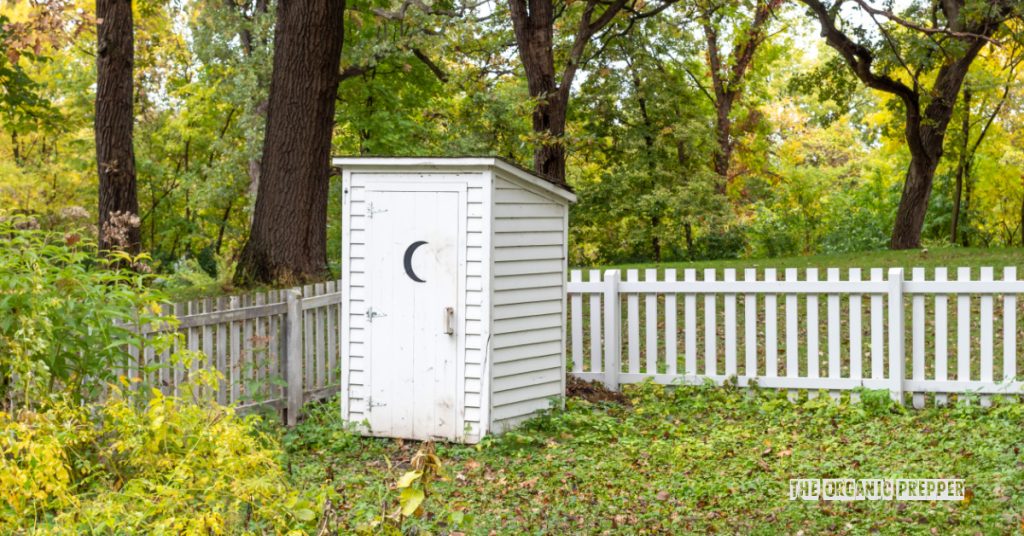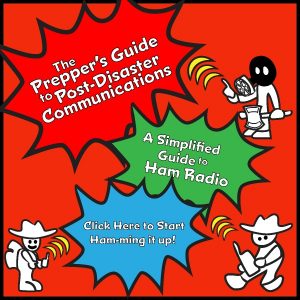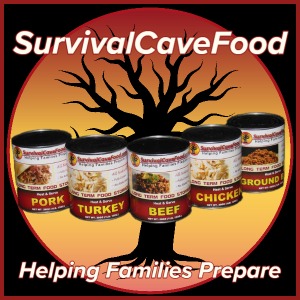If you're new here, you may want to subscribe to my RSS feed. Thanks for visiting!
This article is about one of those things that I don’t think can be learned from reading about it. I am recommending a drill about this. I lived five years off grid with a small solar set up and managed all of my own (ahem) sh*t for five years living without running water at the same time.
There are some things that I believe a person can read about and become more prepared. One example would be herbal medicines. I have shared my own selection of weeds that I eat and use for medicine here. Daisy has an entire course from Cat on this topic available. Check out more info about it here.
If you really want to learn about how serious excrement is in a SHTF scenario, you could find a tiny house and do what I did, living it large. However, for most people living in the city or suburbs and working a job, this is simply not feasible. So, here, folks, is what I’m proposing: A modest one-week trial of waste management, using it as a drill for the SHTF. You can call it potty training, you can say I’m out of my cotton-picking mind. That is fine.
Read on and I’ll share exactly why you might want to get a better handle on this. [DISCLAIMER: If you and your family have gone through or are going through one of the many natural disasters facing this great nation at this time, you have my sincere best wishes and you have likely had enough realistic SHTF training to last a lifetime. Similarly, if you’ve lived with a “composting” toilet for years, you’ve done the drill. Congrats!]
This is for those readers who want to improve their poop IQ for when it really counts.
(For even more information, check out The Basic Sanitation Book, available in printable PDF format.)
My Own Experience
I had dreamt of nothing but tiny homes and composting toilets for years, before they were even a “thing.” You know what they say…be careful what you wish for! For five years, I used a composting toilet (that was not really composting my waste, but that will require another article!).
What I learned is how very much waste there actually is. FROM ONE PERSON….JUST ME!!! Unless you find a way to get a handle on this, I think it could be the downfall of many folks in a true SHTF scenario. I don’t want to waste your time. Ha ha ha! That was a subconscious pun.
But seriously. I don’t want to waste your time. Who wants to write useless articles? I don’t. I am trying to take my most significant experiences and turn them into something that might just come in handy one day, or perhaps save a life.
Human Waste: The Mathematics
To try and impress upon each reader what an urgent issue this is, I did a bit of research and mathematics. This is an attempt to get some numbers that show what I have seen with my own eyes: the sheer, ummm, volume of it all.
It is such a convenience that we go potty, pull a lever and it goes away…..instantly! This is a definite weakness in this society because we don’t understand what a big problem we will have if all of this flushing were to suddenly NOT be available!
Looking at highly scientific sites, I found the following estimates:
Average daily poop volume per person: 420 ml or around 0.44 quarts
Average daily urine volume per person: 1200ml or 1.27 quarts (*Urine volume has a range of volumes that are healthy, so I picked a number in the middle)
So, bear with me here:
This means that for one person, you’re looking at a total volume of all excrements of 1.71 quarts. So, one person will fill a five-gallon bucket in around 12 days. Keep in mind: can YOU carry a five-gallon bucket full of waste the weight of water? I have trouble carrying buckets that full, being a 56-year-old with a bad back.
Now, what if you have FOUR people living in your house in SHTF needing to go? Then, you’re going to fill a five gallon bucket in only 3 days. In fact, in a month, you’ll fill ten. Keep in mind: can you carry full buckets??? The weight is liquid only. Will you all be putting toilet paper in there, too? How well does the lid seal on each bucket you have? Does it remove easily? Where are you going to put these?
A Suggested Drill
I am going to recommend that a household do a week’s trial of using whatever method of SHTF potty you prefer.
Here is a five-gallon bucket with a toilet seat on top.
Daisy has written in the past about how to make a kitty litter toilet. This is your chance to try it. As she says, don’t go cheap on those garbage bags or you are going to have one heck of a mess to clean up!
The idea here is to get some experience with safely managing the human waste in your household and get a sense of the volume you could be dealing with and create some protocols. It’s just one week, but it could make a big difference in your preparedness.
A Drill for When You Can’t Just Flush
There’s a reason it’s called Sh*t HTF! Are you willing to do this drill and let us know what you learned? Have you lived for an extended time without being able to flush? What did you learn, and what preps, if any, did you decide to stock up on afterwards? What is your chosen method of no-flush potties?
Let’s talk poop in the comments section!
About Rowan
Rowan O’Malley is a fourth-generation Irish American who loves all things green: plants (especially shamrocks), trees, herbs, and weeds! She challenges herself daily to live her best life and to be as fit, healthy, and prepared as possible.
















4 Responses
I’ve done research on this subject. I have a pdf booklet on different homemade outhouses. I also purchased a urine diverting composting toilet. What I have learned is that urine can be put directly on a garden, it’s when you mix urine and solid waste (poop) together that it becomes toxic. Solid waste needs to be composted in a regular composting bin, turned into dirt which can then be put on the garden. We live rural so we don’t need 5 lb buckets to hold the waste.
When you have IBS you learn to improvise when you only have one commode & you’re deliberately off-grid; we have a septic tank. There’s that orange stuff used for RV commodes and it works well, breaking down your ‘solids’ – it can take awhile for it to become ‘flushable’ and you might need to re-apply the ‘orange stuff”. For urine, the TP goes into a lined indoor trash can next to the toilet; it doesn’t smell; somehow the urine finds its way to the sewer line while the solids ‘molder’ lol.
Thanks to your website & others, some times ago I tried living off-grid for somethings and it’s great. For flushing it takes up to 2.5 gal. of water; two 1-gal. vinegar jugs, filled to the lid, works here. God bless.
I lived 5 years off grid with no running water..I had a porta potty in the house. I put the tp in a bag that could be burned and then dumped the porta potty in our outhouse ( we had small children at the time that couldn’t be left alone in the house because of the wood stove. You can pour in some vinegar if you have trouble with t smelling. It was extremely workable 😊
My wife and I lived off the grid for a year where using a bucket toilet was our norm.
We kept a second bucket close at hand that contained some garden peatmoss material.
After each bucket toilet (BT) use we sprinkled an ever so slight amount of the peatmoss on what we deposited into the BT. Doing this kept all the insects AND smells away. The peatmoss needed to completely cover what we deposited, but only maybe a quarter inch.
When the bucket became maybe half full we put the materials into a garden compost pile.
We had three of these shipping pallet square compost pile areas; side by side. One we used for putting BT fresh material, a second one with fresh grass clippings and leaves that we used to cover over the material we just added to the first one.
We kept adding to this pile of fresh materials from the garden lawn clippings and it will be used next after the one we are filling now was full,. The third pallet square compost bins was full from our putting BT material into it. It was left untouched and let the heat it generated do its job at making all the BT materials safe and ready for garden use in the future. We found how to do this from the book, Humanure.
We used two BT buckets. One as our present BT. The second had been used for maybe six months, thoroughly cleaned out, and left in the sunshine for getting rid of any odor it might have taken on when in use. Occasionally the BT buckets needed to be eliminated.